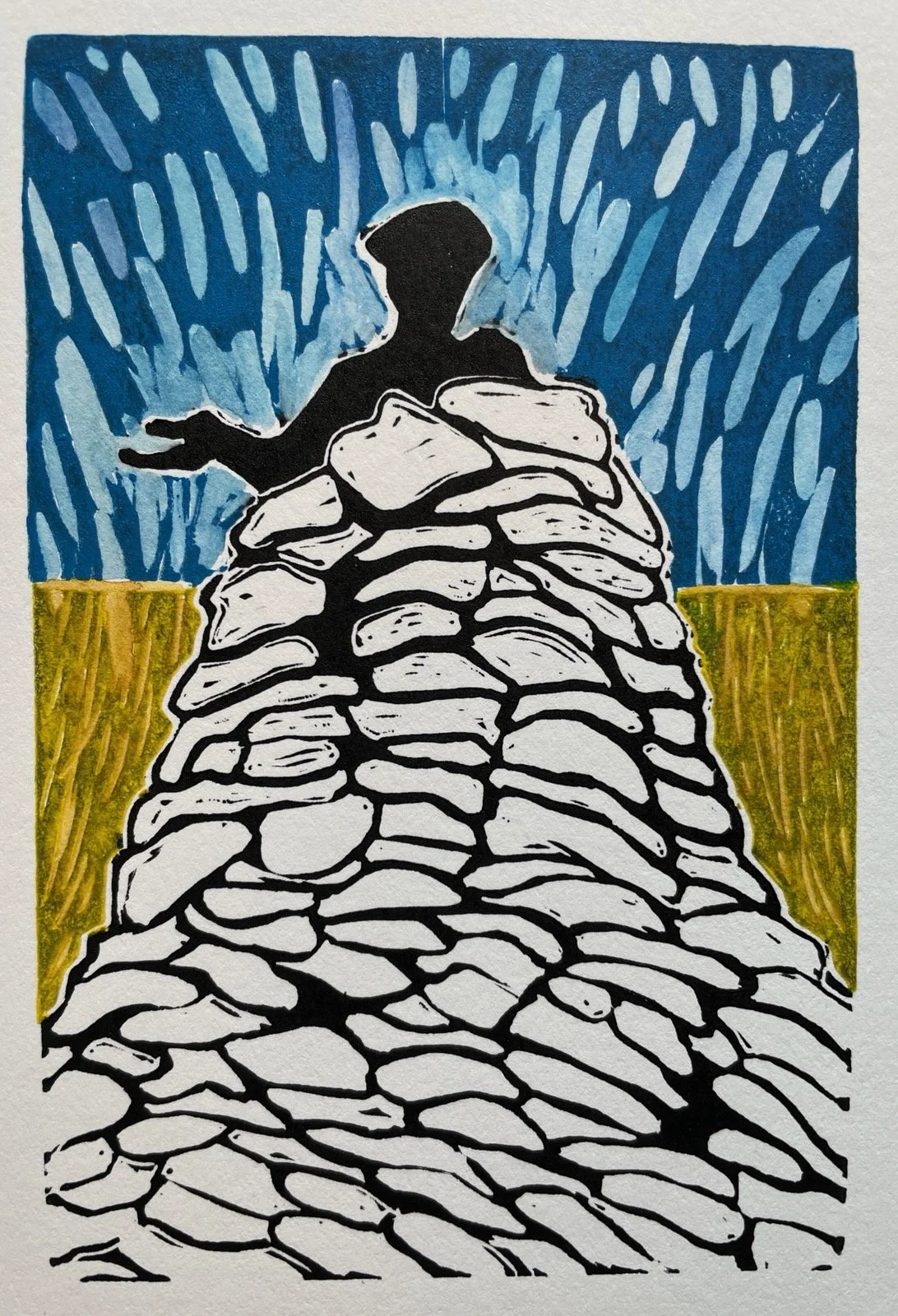the west sound unites for ukraine
For Ukraine (oil on 16” x 20” board) by Kitsap-based artist Rose Guastella. Proceeds from sales support @voices_of_children.
KITSAP ARTISTS FOR UKRAINE




The local artists whose works are pictured above are all donating proceeds from their sales to Ukrainian refugee relief efforts. To buy prints, find them on Instagram at:
Rose Guastella / @rosigami79
Danessa Gray / @grayskies.painting
Erica Nordfors Applewhite /@ericaapplewhite
Heavy Jeens / @heavyjeens
Kate Vikstrom / @katevikstrom2019
BUY ART DIRECT FROM UKRAINIAN ARTISTS
A clever way to send money to Ukrainians is to buy their art, virtually. Bremerton painter Dani Gray compiled this list of Ukrainian artists on Instagram who are selling high-resolution digital prints of their work that you can download and print yourself. Just $20 can make a huge difference.
@odessacityletters / Ukrainian typography museum turned poster bureau.
@yulia_vus / Illustrator in Lviv. Under highlights see ‘prints for sale’
@grasya_oliyko / Kyiv-based children's book illustrator.
@shat.art88 / Ukrainian illustrator Oleksandr Shatokhin.
@nushutu / Ukrainian sculptor and illustrator Tasha Levytska. Currently based in Berlin.
@lostgirlsseries / Lviv-based illustrator and tattoo artist Tomka Humenchuk.
@mr.zhuravchik / Illustrator, poster artist from Lviv.
@innaruda / Inna Ruda. Children's book illustrator based in Kyiv.
@zosia_illustrates / Lviv-based illustrator and painter.
@tsofiako / Sofia Tomilenko. Illustrator based in Kyiv.
@olga.shtonda / Kharkiv-based illustrator Olga Shtonda.
@marikinoo / Kyiv-based illustrator Mari Kinovych.
@mara_kava / Ukrainian illustrator and cartoonist Mara Kava.
DELIVERING RELIEF SUPPLIES INTO UKRAINE
Most humanitarian relief groups aren’t equipped to deliver aid directly into Ukraine. When the Russian invasion began, Bainbridge Island entrepreneur Dale Perry realized he had a unique advantage. The company he co-owns, Energy Resources of Ukraine, had staff and a fleet of delivery trucks on the ground inside the country. To date, his nonprofit Foundation for Equity & Justice has delivered over $2 million in food, medicine, clothes and other relief supplies across the border from Poland into western Ukraine. Donate at aid-for-ukraine.org.
Humanitarian how-tos
Tips from an aid worker on how to make the greatest impact
Words by Madi Williamson
Stories from the frontlines in Kyiv, Kabul and elsewhere have inspired many to seek ways to help war survivors and refugees. Still, it can be hard to know how to lend your voice and support. Here are some tips for how to be a smart, effective humanitarian.
LANGUAGE MATTERS
Do you know the legal definition of a refugee? Or the
difference between an asylum seeker and someone who
is internally displaced? What does the term “migrant”
bring to mind? The language we use can dismantle or
fuel dangerous stigmas and biases. Accuracy with your
words helps inform your perspective and analysis and
helps educate those you talk to.
REFLECT & LEARN
The unequal treatment of Ukrainian refugees versus those
from recent crises in the Middle East, Africa and South
Asia underscores how racism, colorism and Islamophobia
are rampant in our systems and beliefs. Self-reflection
can help identify what you need to learn (and unlearn).
Learning more about the reality of forced migration can
help cultivate empathy. To deepen your understanding, check out my recommended reading list and explore this interactive simulation that helps you learn what the road to safety might look like for some
refugees.
GIVE WISELY
It can be tempting to click and donate to the first urgent
campaign in your newsfeed, but it’s important to be
conscientious of how you contribute. As you choose an
organization to support, look for:
- Financial transparency and public impact reports. All nonprofits should report on how they spend donations. Vet larger groups on charitynavigator.org.
- Positive language and images that do not demean people impacted by disaster or compromise their privacy or safety.
- Inclusion of people from affected communities in leadership roles. Those impacted by a crisis are experts in their own context.
Allyship is a commitment: Don’t just donate, invest. Finding an organization you trust and committing to a $10 monthly donation has a bigger impact than donating $100 one time. It allows organizations to plan strategically and keeps you involved throughout the year. Follow them on social media, share their work, and stay engaged!
Madi Williamson is a nurse from Bainbridge Island who specializes in migratory health. She has spent five years working with refugee populations in the Middle East and Mediterranean region.

